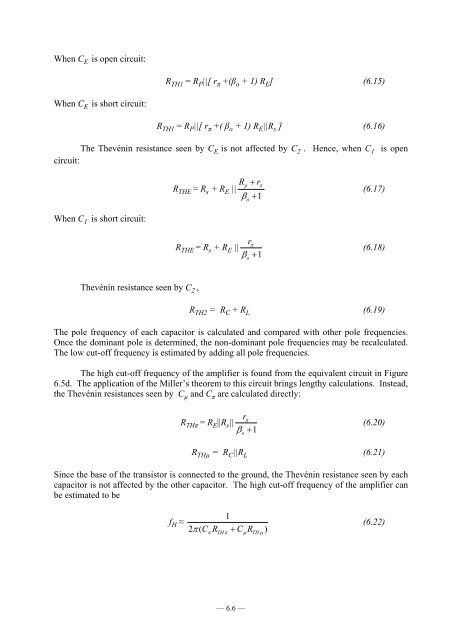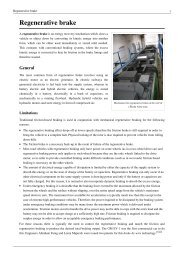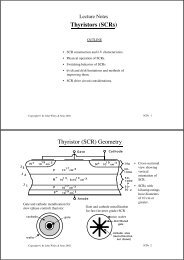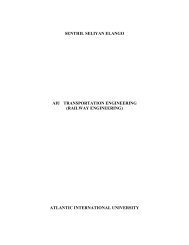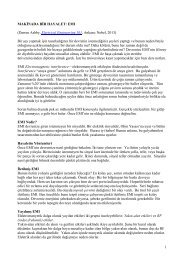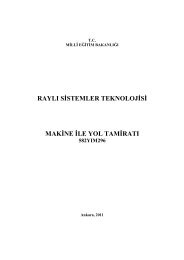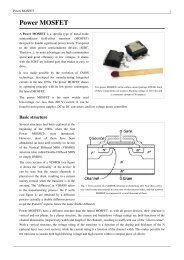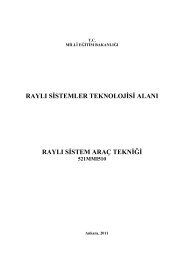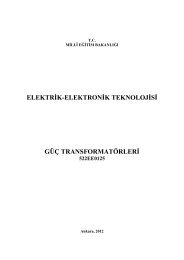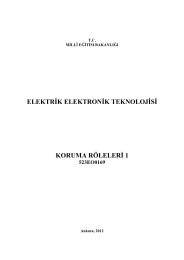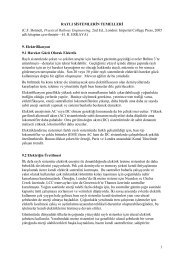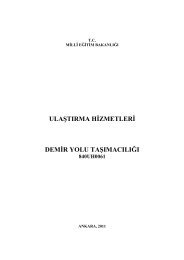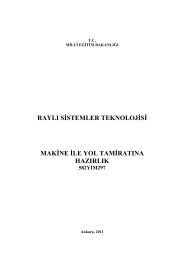Wideband Amplifiers
Wideband Amplifiers
Wideband Amplifiers
Create successful ePaper yourself
Turn your PDF publications into a flip-book with our unique Google optimized e-Paper software.
When C E is open circuit:R TH1 = R P ||[ r π +(β o + 1) R E ] (6.15)When C E is short circuit:R TH1 = R P ||[ r π +( β o + 1) R E ||R s ] (6.16)The Thevénin resistance seen by C E is not affected by C 2 . Hence, when C 1 is opencircuit:Rp+R THE = R s + R E ||β + 1or π(6.17)When C 1 is short circuit:r πR THE = R s + R E ||β + 1o(6.18)Thevénin resistance seen by C 2 ,R TH2 = R C + R L (6.19)The pole frequency of each capacitor is calculated and compared with other pole frequencies.Once the dominant pole is determined, the non-dominant pole frequencies may be recalculated.The low cut-off frequency is estimated by adding all pole frequencies.The high cut-off frequency of the amplifier is found from the equivalent circuit in Figure6.5d. The application of the Miller’s theorem to this circuit brings lengthy calculations. Instead,the Thevénin resistances seen by C µ and C π are calculated directly:r πR THπ = R E ||R s ||β + 1o(6.20)R THµ = R C ||R L (6.21)Since the base of the transistor is connected to the ground, the Thevénin resistance seen by eachcapacitor is not affected by the other capacitor. The high cut-off frequency of the amplifier canbe estimated to bef H ≈12 π ( CR + CR )π THπ μ TH μ(6.22)— 6.6 —


